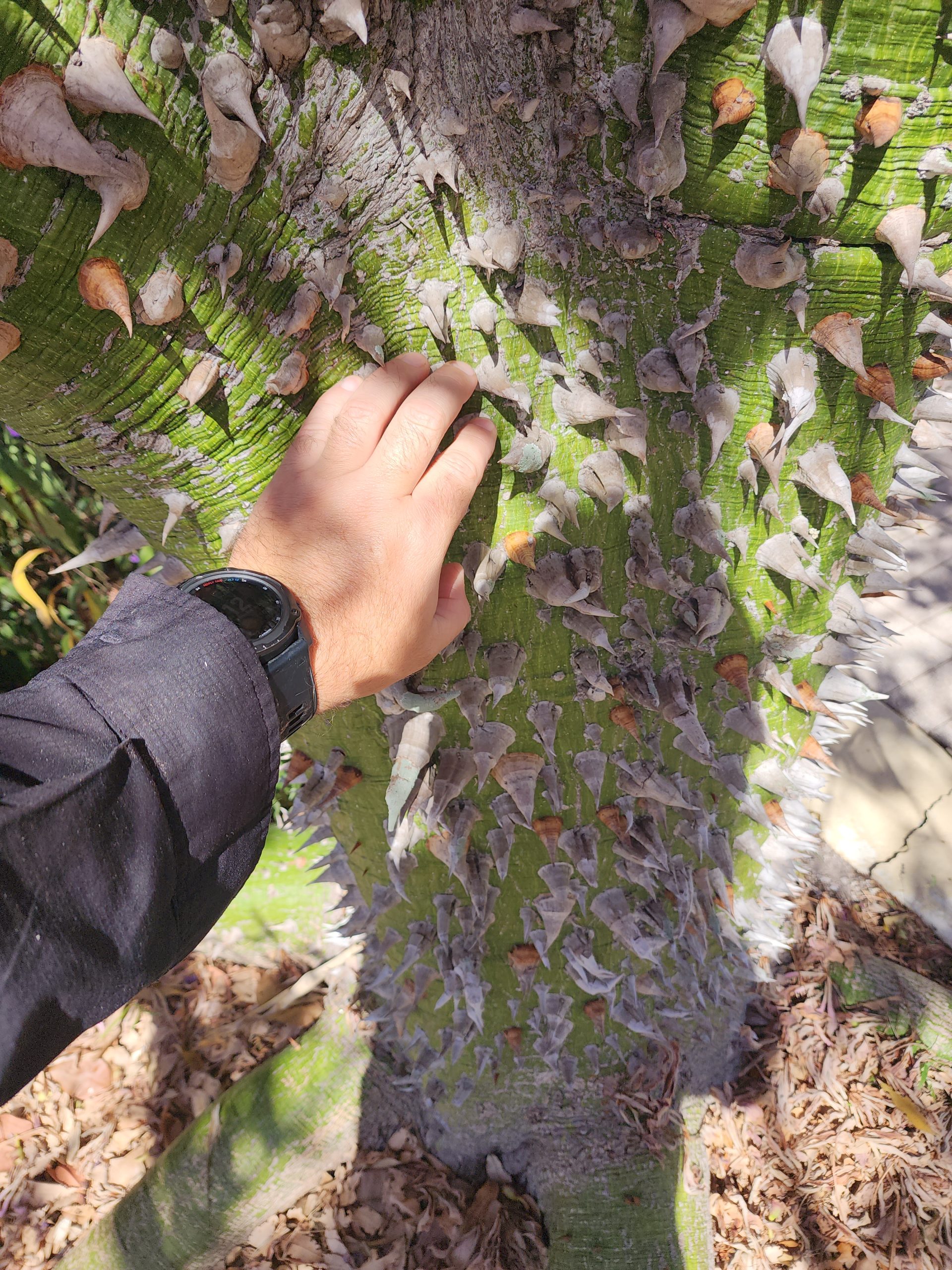
The autumn blooms of a flowering tree have been capturing the attention of many in Sarasota County. Amidst a backdrop of landscapes transitioning into shades of brown with the current drought, these trees stand out, adorned with an abundance of white and pink flowers. But what exactly are these striking trees that bloom so vividly in the fall? They are the Ceiba speciosa, also known as the Silk Floss Tree, and they are true showstoppers during the autumn season. In this blog, we will delve into the captivating characteristics of the Silk Floss Tree, its ethnobotanical uses, and its use in Florida’s landscape settings.
A Florida-Friendly Nonnative Tree
The Ceiba speciosa, native to South America, has found a welcoming home in Florida due to its adaptability to the warm and humid climate of the region. This remarkable tree is renowned for its exceptional features, which become even more prominent during the fall blooming season. While this nonnative tree produces seed pods, it hasn’t shown itself to be an invasive risk.
Autumn Blooms
In Florida, the Silk Floss tree’s fall blooming period typically occurs from September through November, turning the autumn landscape into a spectacle of vibrant colors. During this time, the tree sheds its leaves and bursts into a profusion of large, showy, and waxy flowers ranging in color from stark white to vivid magenta. The sight of these striking blooms, which can measure up to five inches in diameter, is a visual feast and a favorite among enthusiasts of flowering trees.

Not a Tree to Hug
As the leaves fall, the tree’s green, spiky trunk becomes even more prominent, offering an unobstructed view of its intricate bark. The trunk is adorned with large, conical thorns, making it a truly unique specimen that stands out in the Florida landscape. The massive thorns are a relic from the days of Giant Ground Sloths and other mega-fauna. The trunk maintains its vibrant green color until the tree reaches maturity, aiding younger trees in photosynthesis. Once mature, the trunk greys with age.
Ethnobotanical Uses
Beyond its aesthetic charm, the Ceiba speciosa boasts a history of ethnobotanical uses. In its native South American regions, indigenous peoples have utilized the silky fibers found within the tree’s seed pods for centuries to create textiles, ropes, and stuffing material for pillows and mattresses. Similar to the uses of cotton, just from a tree instead of a shrub. These fibers are known for their water resistance and softness, which is where the name Silk Floss originates from.
Landscape Settings: An Exquisite Addition
The Silk Floss Tree’s aesthetic appeal and adaptability have made it a sought-after choice for Florida’s landscape settings. Whether planted in public parks, botanical gardens, or private residences, this specimen tree adds a striking element to the landscape. Its unique trunk and showy fall blooms make it a conversation starter and a favorite among horticulturists and landscapers.
Highly adaptable to the climate of central and south Florida and thriving in well-draining soils, this fast-growing tree can reach a height of 50 feet and a spread of 50 feet, making it quite substantial at maturity. However, many trees seem to be planted root-bound and fail to reach their full potential.

Conclusion: A Fall Gem in Florida’s Landscape
While the Silk Floss tree may not be the perfect fit for every landscape, it is undeniably a Florida-friendly tree that adds a touch of fall color to the scenery. The sight of these trees in full bloom during autumn has led many, including myself, to slow down and pull over to admire the spectacle they create. In the future, Forest Hecker, the Florida-Friendly Landscaping ™ Community Educator for Sarasota County, plans to install an allée of flowering trees at Twin Lakes Park, including Silk Floss. Planting will start following the completion of the Native Tree walk and Food Forest projects.
During the preparation of this work, the author used ChatGPT to help build the blog post. After using this tool/service, the author reviewed and edited the content, and takes full responsibility for the content of the publication.
Resources:
- https://edis.ifas.ufl.edu/publication/ST164
- https://blogs.ifas.ufl.edu/orangeco/2022/08/16/the-silk-floss-tree/
- https://hort.ifas.ufl.edu/database/documents/pdf/tree_fact_sheets/chospea.pdf
- https://hort.ifas.ufl.edu/woody/Pages/chospe/chospe.shtml
Source: UF/IFAS Pest Alert
Note: All images and contents are the property of UF/IFAS.



